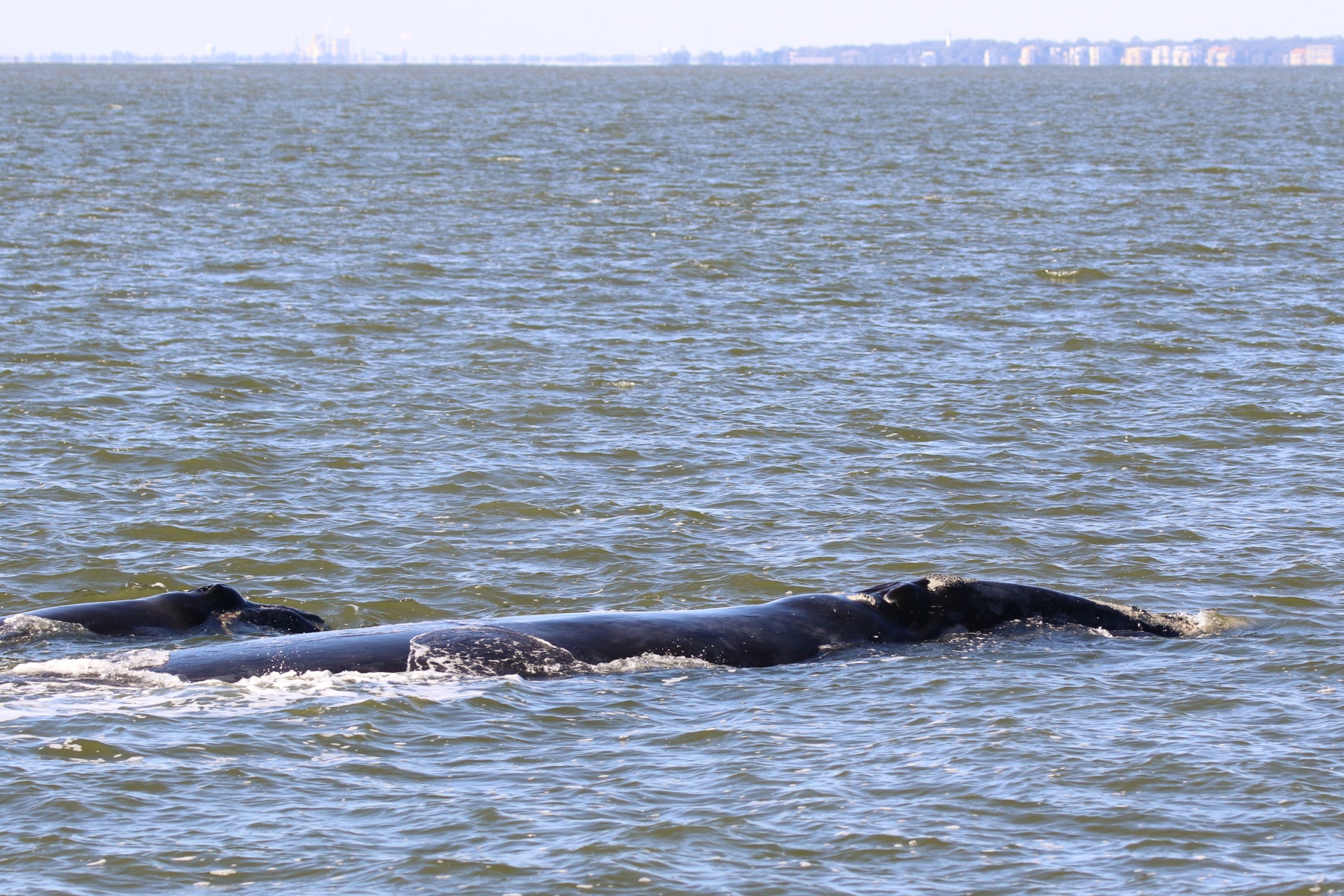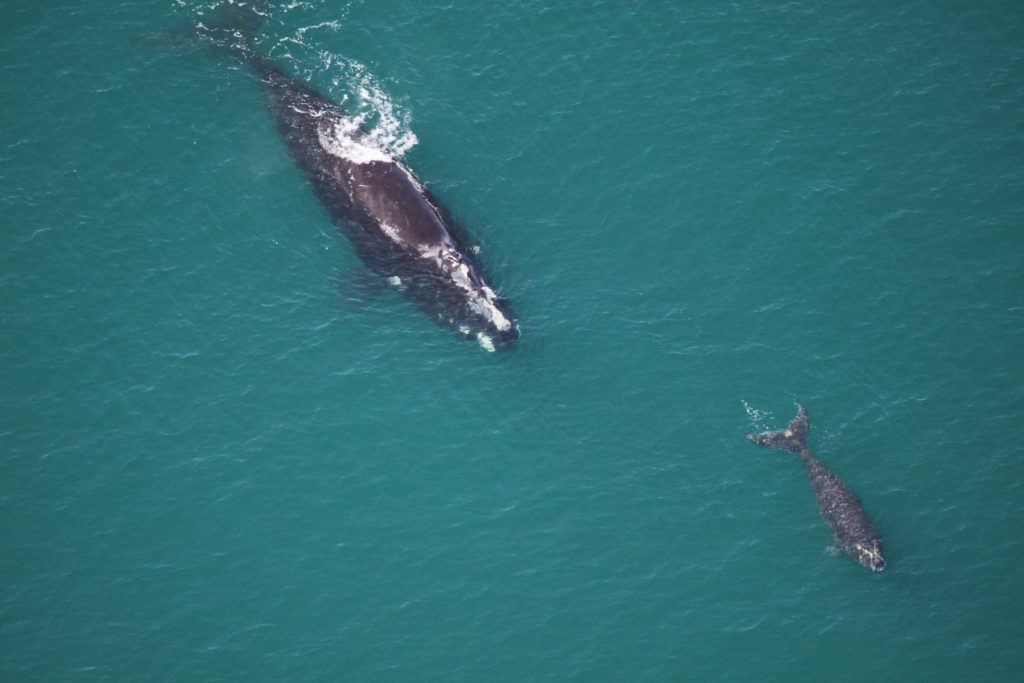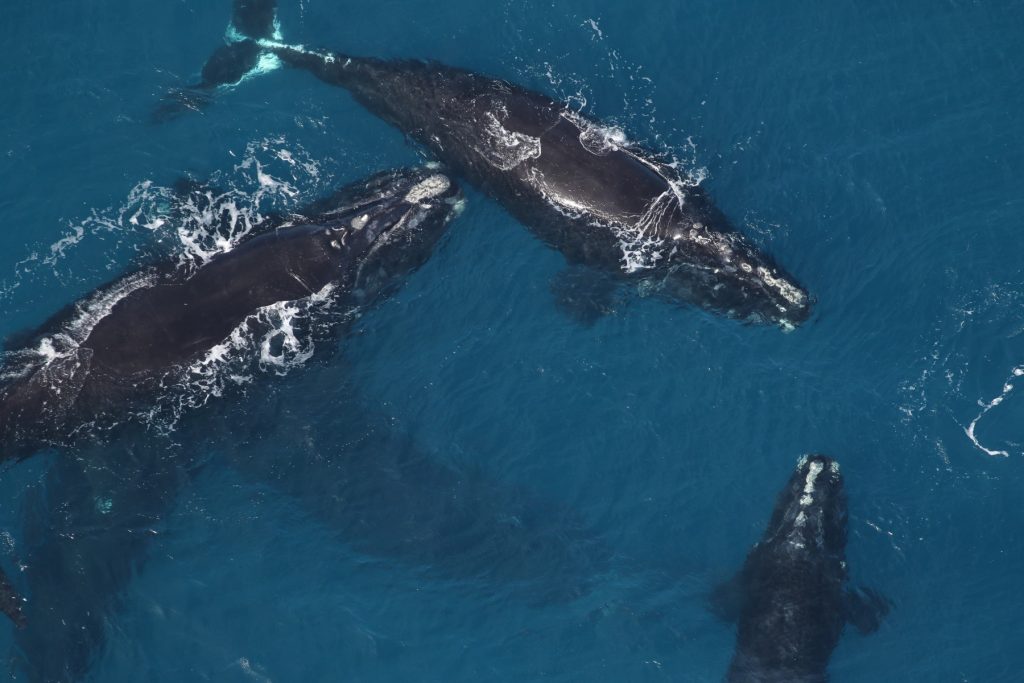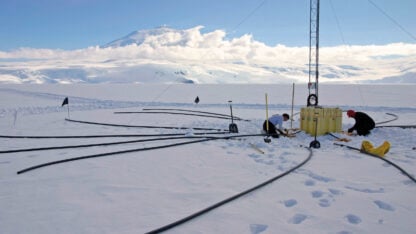Study: North Atlantic Right Whales ‘Whisper’ To Their Calves

North Atlantic right whale #1281, nicknamed “Punctuation,” and her calf are shown resting on the ocean’s surface near St. Simons Island and Brunswick. Recent recordings from a study show that mother whales communicate with their babies – very quietly.
Georgia DNR, taken under NOAA research permit #15488.
Until recently, no one knew how North Atlantic right whale mothers communicated with their calves.
The whales, which have their calves off the coast of Georgia and north Florida, make sounds, but scientists had never found evidence of the mothers calling to their babies.
Now, those sounds have been recorded. And a recent study explains why they’d been so hard to find before: the communications are very quiet.

Researchers say it’s a survival mechanism that could be important for protecting the endangered whales in the future.
So here are the sounds.
First, a typical sound a North Atlantic right whale makes.
“They’re generally loud,” Susan Parks, an associate professor of biology at Syracuse University, said. “I usually describe them as sort of a cross between a cow and an elephant.”
But things are different when the whales communicate with their babies. Here are three examples, all of the same whale.
Example No. 1
Example No. 2
Example No. 3
“These grunts are really just almost more like a cat purring and so much, much quieter, and something that you’d only be able to hear from a few meters away,” Parks said.
To record the whale whispers, Parks used suction cups to stick recorders on the mother whales. Once the recorders fell off, she collected them and listened.
The sounds had not previously turned up when researchers used underwater microphones farther away from the whales.
Parks said in her 20 years studying North Atlantic right whales, she’s never heard these sounds anywhere else. They’ve only been recorded in the calving grounds.
As Parks describes in her study, published in the journal “Biology Letters,” other whale species have been documented being quieter with their calves, but still, she said, she was surprised by her own findings.
This paper is sort of the revelatory, ‘Oh, that’s why we missed them. Because they don’t want to be heard.’”
Aaron Rice, principal ecologist at the Center for Conservation Bioacoustics at the Cornell Lab of Ornithology
“I’m surprised that I was surprised that right whales make different sounds when they have very young offspring,” Parks said. “Because in hindsight, I’ve realized that the sounds that I or my friends make with newborn human babies are not sounds that we use to communicate with adults.”
And it makes sense that the whales would want to be quiet when they’re in the calving grounds with their calves. While pretty much nothing eats a healthy, full-grown North Atlantic right whale, sharks would eat a calf if they knew where to find it.
“This paper is sort of the revelatory, ‘Oh, that’s why we missed them. Because they don’t want to be heard,’” said Aaron Rice, principal ecologist at the Center for Conservation Bioacoustics at the Cornell Lab of Ornithology.
Rice, who wasn’t involved in this study, said he’s also looked for North Atlantic right whale mother-calf communications but had never heard them before Parks used the suction cup recorders.
Figuring out that the whales are making sounds, just very quietly, could be helpful for North Atlantic right whale conservation, he said.
“Trying to understand how this imperiled species makes a living and what we can do to minimize human impacts is really critical,” Rice said.

About 400 of the whales are left, and in the past few years, more have been dying than have been born. They’ve been hit by ships near Canada and tangled in lobster trap gear in New England. Their food appears to be moving farther north, and the mothers are having calves less frequently.
Parks said that can make it hard to be a right whale biologist.
“It’s heartbreaking because in the studies that I do, we follow individuals,” she said. “In this case, I see mothers with young babies, and then hear a few months later about one of these babies being killed by ships.”
One of the whales heard in this story, the one calling quietly to a calf, died this summer.
An autopsy suggested the whale, nicknamed Punctuation by researchers, had been killed by a ship. Parks said Punctuation was found dead just a week before she submitted this research for publication.








